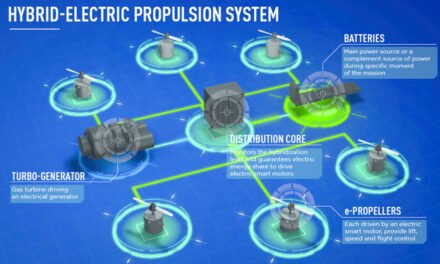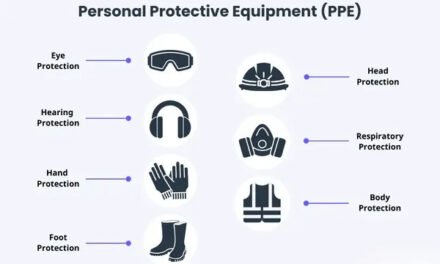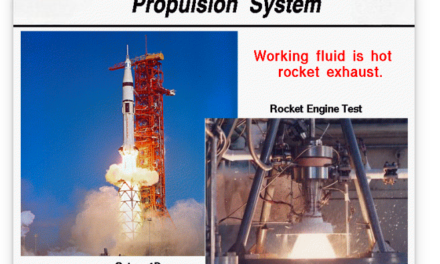Environmental concerns significantly influence the design of aerospace components and systems by driving innovation toward sustainability, efficiency, and reduced ecological impact. These concerns shape materials, propulsion technologies, manufacturing processes, and operational strategies.
1. Lightweight Materials for Reduced Emissions
- Influence: Lighter aircraft and spacecraft consume less fuel, reducing greenhouse gas emissions.
- Design Solutions:
- Use of advanced composites (e.g., carbon fiber) and lightweight alloys (e.g., aluminum-lithium).
- Additive manufacturing (3D printing) minimizes waste and optimizes weight.
2. Fuel Efficiency and Alternative Propulsion
- Influence: Rising awareness of aviation’s carbon footprint has led to a focus on fuel efficiency and greener propulsion.
- Design Solutions:
- Aerodynamic designs to reduce drag.
- Development of fuel-efficient engines, such as geared turbofans.
- Exploration of alternative fuels, including sustainable aviation fuel (SAF), hydrogen, and biofuels.
- Electric and hybrid-electric propulsion systems for regional and urban air mobility.
3. Noise Reduction
- Influence: Noise pollution from aircraft, especially near urban areas, demands quieter systems.
- Design Solutions:
- Engine modifications, such as chevrons on jet engine nozzles.
- Improved nacelle and fan designs to suppress noise.
- Use of quieter propeller and rotor blade technologies for UAVs and eVTOLs.
4. Reduced Waste in Manufacturing
- Influence: Traditional aerospace manufacturing generates significant material waste.
- Design Solutions:
- Adoption of additive manufacturing to produce near-net-shape components.
- Recycling and reuse of materials, such as aluminum and composites.
- Implementation of green manufacturing processes with reduced energy and water usage.
5. Sustainable End-of-Life Strategies
- Influence: Managing the disposal of aircraft and spacecraft responsibly reduces environmental impact.
- Design Solutions:
- Use of recyclable materials for aircraft parts.
- Satellite designs that allow for controlled deorbiting or transfer to graveyard orbits.
- Modular designs for easy disassembly and recycling.
6. Renewable Energy and Power Systems
- Influence: Dependence on fossil fuels and limited energy resources in space missions drive the need for renewable power.
- Design Solutions:
- Solar-powered systems for satellites and space missions.
- Lightweight, high-efficiency solar arrays for spacecraft.
- Fuel cells and advanced batteries for energy storage.
7. Atmospheric and Space Pollution Reduction
- Influence: Concerns about particulate emissions and space debris drive cleaner technologies.
- Design Solutions:
- Engines with lower particulate and NOx emissions.
- Low-impact launch systems, such as reusable rockets.
- Spacecraft designs that minimize debris creation or include deorbiting mechanisms.
8. Operational Efficiency
- Influence: Efficient operations reduce environmental impact during an aircraft’s lifecycle.
- Design Solutions:
- Optimization of flight paths and air traffic management (e.g., continuous descent approaches).
- Lightweight avionics systems for reduced energy consumption.
- Integration of predictive maintenance to extend the lifespan of components and reduce waste.
9. Regulations and Certifications
- Influence: Governments and international bodies impose stringent environmental standards.
- Design Solutions:
- Compliance with emissions standards set by ICAO and FAA.
- Development of certified sustainable aviation fuels and propulsion systems.
10. Innovative Research and Development
- Influence: Long-term environmental goals, such as net-zero emissions, drive ongoing innovation.
- Design Solutions:
- Exploration of hydrogen-powered aircraft for carbon-free propulsion.
- Development of autonomous, solar-powered UAVs for surveillance and connectivity.
Examples of Environmentally-Driven Designs
- Airbus A350 and Boeing 787:
- Use of advanced materials and efficient engines to reduce fuel consumption.
- SpaceX Reusable Rockets:
- Reduce waste and cost by recovering and reusing rocket stages.
- Electric Vertical Takeoff and Landing (eVTOL) Aircraft:
- Focused on clean, urban air mobility with electric propulsion.













